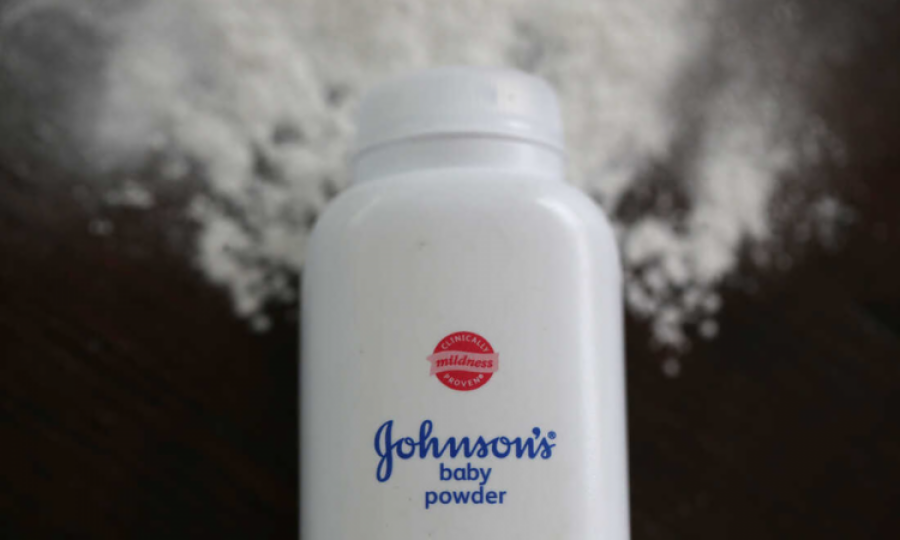J&J bid to move cancer patients lawsuits to bankruptcy court thwarted

WASHINGTON: In the long legal fight over allegations linking the talc in Johnson & Johnson baby powder to ovarian cancer, the women plaintiffs got an incremental victory recently when a federal appeals court rejected the company’s bid to move more than 38,000 lawsuits to bankruptcy court.
Thousands of lawsuits allege that J&J’s talc-based baby powder caused cancer.
Plaintiff Deborah Smith’s case was held up for 15 months because of the J&J’s attempted maneuver, a legal strategy colloquially known as the Texas Two-Step, that relied on the creation of a subsidiary called LTL Management that could take on the liability for talc-related legal claims. Within days of its creation in 2021, LTL filed for Chapter 11 bankruptcy.
By that time, more than two years had passed since Smith filed her suit. The news of the Two-Step, she said, felt like “a slap in the face.” “If that was someone in their family, would they drag it out like that?” Smith said. “It’s almost like they’re playing a waiting game to see how many people will just die or just give up fighting.”
Smith was diagnosed with ovarian cancer in 2003, after her doctor discovered a tumor during a procedure to remove a uterine fibroid. She had two surgeries and three cycles of chemotherapy, she added, leading to loss of hair that could never grow back properly, compelling her to wear wigs.
According to Smith’s suit, she used J&J’s baby powder as a feminine hygiene product to absorb sweat and keep her skin dry for more than 15 years. The suit says Smith also used Shower to Shower, a talc-based product formerly manufactured by J&J, until 2003.
The lawsuit cites more than 25 published studies dating back to 1982 that evaluate a link between talc and ovarian cancer risk. The suit alleges that nearly all those studies document a particular risk associated with using talc on the genital area. The World Health Organization’s International Agency for Research on Cancer considers this use to be “possibly carcinogenic.”
Smith is seeking punitive damages, as well as compensation for medical expenses and pain and suffering.
She says though her cancer has been in remission since 2005, fear of resurgence always haunts her, like other patients. “Even though I’ve been cancer-free all those years, when I go to the doctor to have any kind of test, I’m always wondering if they’re going to find something wrong,” Smith says.
J&J has faced mounting lawsuits for roughly a decade, with plaintiffs alleging that their ovarian cancer or mesothelioma — a rare cancer affecting the thin layer of tissue that lines the chest and abdomen — was caused by asbestos found in the company’s talc-based baby powder, an allegation the company denies.
“We continue to stand behind the safety of Johnson’s Baby Powder, which is safe, does not contain asbestos and does not cause cancer,” a J&J spokesperson claims.
However, a 2018 Reuters investigation suggested that J&J knew some of its baby powder was contaminated with small amounts of asbestos as early as the 1970s. Reuters reported that its probe was based on the information gleaned from J&J company memos, internal reports, confidential documents, and deposition and trial testimonies.
According to that investigation, the earliest known lawsuit linking ovarian cancer and J&J baby powder was filed in 1997. J&J, however, denied to Reuters that it knew of or hid any talc-related safety issues and said independent tests had shown its talc did not contain asbestos.
Dr Arthur Frank, an environmental and occupational health professor at Drexel University, says the protocols used in the independent asbestos tests that J&J has relied on aren’t as sensitive as some other detection methods. “Depending on which laboratory you go to that does a more diligent search than the industry did, you can certainly find asbestos in many products,” Frank says.
J&J pulled its talc-based baby powder from the North American market in 2020 and switched to a formula that uses cornstarch. The company says it remained confident in the safety of its baby powder and that its decision was based on declining consumer demand due to “misinformation around the safety of the product.” J&J has said it will stop selling talc-based baby powder globally this year.
As both talc and asbestos are found together in nature, there are chances that raw talc collected via mining may contain asbestos fibers that can wind up in talc-based products.
“There’s no process that these manufacturers use that can remove the asbestos from the talcum materials that they’re putting out there,” Frank says.
Asbestos can cause several types of cancer, including mesothelioma and lung, laryngeal and ovarian. No amount of exposure to the substance is considered safe, according to the Occupational Safety and Health Administration. People who are routinely exposed to asbestos fibers or get exposed to large amounts face a greater health risk, Frank says.
The WHO considers talc that contains asbestos to be carcinogenic, but does not classify pure talc as a cancer-causing agent.
Another litigant, Mary Ann Bingheri, who lives in Houston, used J&J’s baby powder from 1968 to 2016, according to her lawsuit. Her suit says she used Shower to Shower as well.
Advertisement
Trending
Popular
Aging: New study identifies key lifestyle, environmental factors ...
-
Hair loss: Discovery uncovers key stem ...
08:00 PM, 25 Feb, 2025 -
Broccoli sprout compound may help lower ...
11:31 AM, 25 Feb, 2025 -
Gas Pain vs. Heart Attack: How to tell ...
09:00 PM, 22 Feb, 2025 -
Coconut oil supplement shows promise ...
08:00 PM, 20 Feb, 2025



